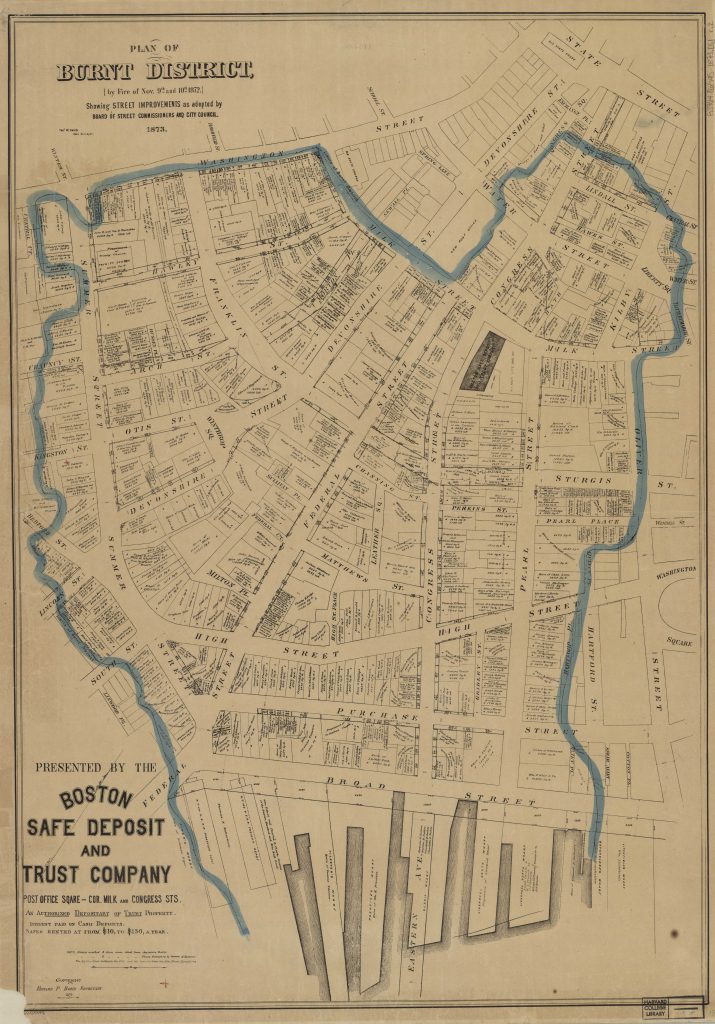A fire started in a warehouse in the business district of Boston on Saturday, 9 November 1872. Since it was a weekend, this fire on Summer Street went unnoticed as it climbed the wooden casing of the elevator to the roof, where it became a serious blaze. It spread north until it finally died out early Sunday morning, destroying 776 buildings and sixty-five acres. The fire crippled the entire, vital drygoods industry as well as wholesalers of textiles, leather goods, and clothing. Unlike the Chicago Fire, which burnt on average the area of the whole Boston Fire every hour for a day and a half and destroyed a mix of kinds of buildings, the Boston Fire affected virtually no residences. Because of the homogeneity of the affected buildings, the commercial district did not dramatically expand or move with the exception of some drygoods merchants moving south.
Thomas Wood Davis, “Plan of burnt district (by fire of Nov. 9th and 10th, 1872)” (1873)

